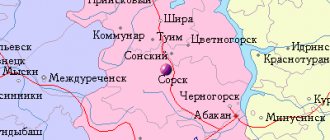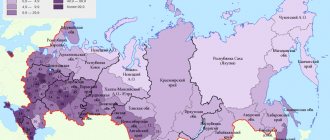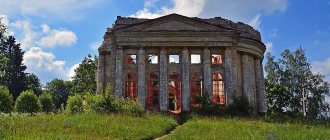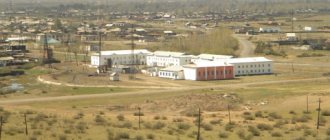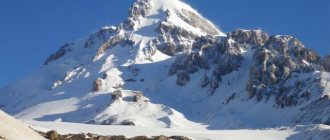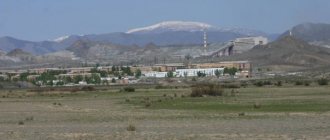About the city of Sosnogorsk
Sosnogorsk (in Komi Sӧsnagort) is a city (since 1955) in the Komi Republic of the Russian Federation, the administrative center of the Sosnogorsk municipal district.
Geographical position
The city of Sosnogorsk belongs to the Pechora basin and covers an area of about 25 sq. km. Located in the geographical center of the Republic.
The city is located on the left bank of the Izhma River (Pechora basin), 345 km from Syktyvkar, 15 km from Ukhta.
The territory of the Sosnogorsk municipal district is located in the central part of the Komi Republic. It borders on the territories of Vuktyl, Pechora, Ukhta, Izhemsky district, Troitsko-Pechora district and Ust-Kulomsky district.
The area is located on a gently sloping, slightly hilly plateau, dissected by rivers and streams of the Izhma River basin. Gley-podzolic and podzolic-boggy soils predominate. The main water artery of Sosnogorsk is the river. Izhma. Its largest tributaries are the Ayuva, Ukhta, Syuzyu, Upper and Lower Odessa. The Lemyu and Velyu rivers (the Pechora River basin) originate in the Sosnogorsk region. The share of wetlands is 13% of the total area.
Natural resources
The total area of the forest fund (as of 2003) is 1,619 thousand hectares, including 1,353.5 thousand hectares covered with forest with a total stock of wood per root of 104 million m³ or 3.8% of the total wood stock of the republic. The bulk of the reserves are coniferous species (81%). The forest cover of the region is 84%.
Forests belong to the subzones of the middle and northern taiga. Coniferous species predominate, with birch and aspen also found. The forests are inhabited by moose, squirrels, partridges, wood grouse, black grouse and hazel grouse. The species composition of fish is diverse.
Protected natural areas and objects include the Gazhayag and Sedyu reserves with coniferous forests and reindeer mosses, located in the upper reaches of the Izhma River. The Lemew River with its beautiful oxbow lakes, where fish are found, is considered a natural water monument.
Among the mineral resources that the region has are fuel and energy - oil, gas, oil shale. There are significant reserves of unique peat with a wide range of uses, mineral medicinal water, gypsum, etc.
The region has the largest base of hydrocarbon raw materials. 26 deposits have been discovered, of which 16 are being developed, 10 are in exploration. Of the discovered ones, two deposits belong to the category of large ones, these are Pashninskoye and Zapadno-Tebukskoye, and two are classified as medium-sized ones - North-Savinoborskoye and Dzhierskoye).
Deposits of gypsum, bitumen, sand and gravel mixtures, and sand for construction work have been identified in the Sosnogorsk region. Two deposits have been explored for fresh underground water reserves - Ayyuvinskoye and Nizhneodesskoye, the latter is not exploited.
Climate
- Average annual air temperature - −1.5 °C
- Relative air humidity - 75.4%
- Average wind speed - 3.0 m/s
Early history
Back in the Stone Age (7-11 thousand years ago), the territory of the Sosnogorsk region was inhabited by primitive communities, and in the early Middle Ages (at the turn of the 1st-2nd millennium) here, in the vicinity of the village of Ust-Ukhta, there was a primitive settlement with an earthen rampart.
First half of the twentieth century
The current villages of the Sosnogorsk region were founded in the late 18th - first half of the 19th centuries. The history of the villages and city of Sosnogorsk begins with the stage of industrialization of the 1930-1940s.
In 1937, a plan for the construction of the North Pechora main line “Konosha – Kotlas – Vorkuta” was adopted, and this was associated with the start of construction in 1939 of the Izhma station, which in 1942 became the center of one of the five branches of the railway in Komi.
Since November 1945, near the working village of Izhma, a new village of Sosnovka has been built - the gas processing center of the North.
From the mid-twentieth century to the present day
On December 1, 1955, the Presidium of the Supreme Soviet of the RSFSR approved a Decree on the formation of the city of Izhma, renamed Sosnogorsk in 1957, on the basis of these two settlements.
On November 29, 1979, the Presidium of the Supreme Soviet of the RSFSR separated a new district from the Ukhtinsky district - Sosnogorsky - with a territory of 16,481 thousand km² (3.9% of the territory of Komi) and a population of about 60 thousand people (5.3% of the republic’s inhabitants). It was the 20th district in the Komi Autonomous Soviet Socialist Republic.
In 2001, the Sosnogorsk branch (since 2011 - Sosnogorsk region) of the Northern Railway became a monopoly throughout the entire territory of the Komi Republic and partially in the Arkhangelsk region. Sosnogorsk, one of the economic centers of the Northwestern District, stretches for almost 10 km along the Izhma and Ukhta rivers, carrying their waters to Pechora.
As part of the Barentskomur project, it is planned to build a railway from Sosnogorsk to the village of Indiga, located at the mouth of the Indiga River, which flows into the Barents Sea.
Population
City:
- 1959 – 15,799 people
- 1972 – 24,688 people
- 1979 – 27,021 people
- 1989 – 30,439 people
- 2002 – 29,587 people
- 2009 – 28,103 people
- 2010 – 27,757 people
- 2012 – 27,473 people
- 2013 – 27,326 people
- Urban settlement Sosnogorsk:
- 2002 – 52,486 people
- 2009 – 49,178 people
- 2010 – 28,139 people
- 2011 – 28,079 people
- 2012 – 27,854 people
- 2013 – 33,088 people
Culture
The annual Republican Festival of Jazz, Rock and Popular Music has been held in Sosnogorsk since 1991. The last, XXth in a row, took place in July 2013, where it brought together many representatives of jazz, pop and rock culture of the republic. Festival headliner: Vyacheslav Butusov.
Healthcare
The district's healthcare system is represented by three municipal hospitals and 14 first-aid posts. The hospital's capacity is 204 beds. Also in the district there is a non-governmental health care institution “Departmental Hospital”.
Economy
The basis of the region's industry is made up of such enterprises as: Gazprompererabotka LLC, Sosnogorsk branch of the Northern Railway. - branch of JSC Russian Railways, Sosnogorskaya CHPP. Also, these enterprises are the largest employers and, as a result, the main payers of personal income tax. In the district, 4 peasant farms and 32 personal subsidiary plots produce agricultural products.
Sport
Sports and fitness complex
Opened October 30, 2009. The sports complex was built with financial support (60 million rubles) from OJSC Gazprom as part of the Gazprom for Children project
Ice Palace "Star"
The dimensions of the ice field are 56x28 meters. The capacity of the site for mass skating is 120 people, the number of athletes simultaneously practicing on the ice is 64 people. The auditorium has a capacity of 200 seats. In addition, the two-story building houses locker rooms, showers, including for the disabled, rooms for judges, a gym, a choreography room, a cafeteria, a first-aid post, and parking for visitors to the skating rink.
Sports complex "Khimik"
Since 09/05/2012, the Khimik sports complex became the Gladiator martial arts club.
Universal sports complex of international class "Meteor"
The total amount of financing amounted to more than 196 million rubles. The funds were allocated from the republican budget as part of the implementation of the target republican program “Development of infrastructure for physical culture and sports in the Komi Republic for 2008-2013”, taking into account co-financing from the district budget in the amount of 2.6 million rubles. The complex includes a universal games room, a gym, a methodological classroom, 2 medical rooms, a guest room, and a cafeteria. The capacity of the complex is up to 600 people.
Transport
- Junction railway station Sosnogorsk of the Northern Railway.
- Ukhta Airport is located near the city.
Interesting Facts
December 6, 2007 – Sosnogorsk won the nomination “Best city of the Russian Federation in terms of economic indicators” in the “Small town” category.
Population[ | ]
| Population | ||||||
| 2002[9] | 2009[10] | 2010[11] | 2011[12] | 2012[13] | 2013[14] | 2014[15] |
| 52 486 | ↘49 178 | ↘46 775 | ↘46 586 | ↘46 035 | ↘45 681 | ↘45 176 |
| 2015[16] | 2016[17] | 2017[18] | 2018[19] | 2019[20] | 2020[4] | |
| ↘44 720 | ↘44 255 | ↘43 964 | ↘43 507 | ↘42 939 | ↘42 628 | |
Urbanization
87.93% of the district's population live in urban areas (the city of Sosnogorsk, the towns of Voyvozh and Nizhny Odes).
National composition of Sosnogorsk according to the 2010 census:[21]
- Total - 46,775 people.
- Russians - 36230 people. (80.8%),
- Komi - 4007 people. (8.9%),
- Ukrainians - 1936 people. (4.3%)
- Belarusians - 550 people. (1.2%)
- those who indicated their nationality - 44865 people. (100.0%).
The national composition is dominated by Russians - more than 72%, then (in descending order): Komi, Ukrainians, Belarusians, Tatars, Chuvash, Germans.
Notes[ | ]
- ↑ 12
from the point of view of the administrative-territorial structure - ↑ 12
from the point of view of the municipal structure - ↑ 1234
(Komi Republic. Total land area of the municipality - ↑ 12345
Population of the Russian Federation by municipalities as of January 1, 2021 (Russian). Date accessed: October 17, 2021. Archived October 17, 2021. - Constitution of the Komi Republic; Law of the Komi Republic of March 6, 2006 N 13-RZ “ON THE ADMINISTRATIVE-TERRITORIAL STRUCTURE OF THE KOMI REPUBLIC” (as amended as of 05/06/2016)
- Charter of the municipal district (docx)
- List of regions of the Far North and equivalent areas
- Izvail
- All-Russian population census 2002. Volume. 1, table 4. Population of Russia, federal districts, constituent entities of the Russian Federation, districts, urban settlements, rural settlements - regional centers and rural settlements with a population of 3 thousand or more (unspecified)
. Archived from the original on February 3, 2012. - The size of the permanent population of the Russian Federation by cities, urban-type settlements and regions as of January 1, 2009 (unspecified)
. Retrieved January 2, 2014. Archived January 2, 2014. - ↑ 1 2 3 4 5 6 7 8 9 10 11 12 13 14 15 16
All-Russian population census 2010.
Population of urban districts, municipal areas, settlements and populated areas (undefined)
. Access date: December 29, 2014. Archived December 29, 2014. - Resident population estimate as of January 1
- Population of the Russian Federation by municipalities. Table 35. Estimated resident population as of January 1, 2012 (unspecified)
. Retrieved May 31, 2014. Archived May 31, 2014. - Population of the Russian Federation by municipalities as of January 1, 2013. - M.: Federal State Statistics Service Rosstat, 2013. - 528 p. (Table 33. Population of urban districts, municipal districts, urban and rural settlements, urban settlements, rural settlements) (undefined)
. Retrieved November 16, 2013. Archived November 16, 2013. - Population estimate for urban districts, municipal districts, settlements and urban settlements of the Komi Republic as of January 1, 2014 (unspecified)
. Retrieved March 22, 2014. Archived March 22, 2014. - Population of the Russian Federation by municipalities as of January 1, 2015 (unspecified)
. Access date: August 6, 2015. Archived August 6, 2015. - ↑ 12
Population of the Russian Federation by municipalities as of January 1, 2021 (Russian) (October 5, 2018). Date accessed: May 15, 2021. Archived May 8, 2021. - Population of the Russian Federation by municipalities as of January 1, 2021 (Russian) (July 31, 2017). Retrieved July 31, 2021. Archived July 31, 2021.
- Population of the Russian Federation by municipalities as of January 1, 2021 (Russian). Retrieved July 25, 2018. Archived July 26, 2021.
- Population of the Russian Federation by municipalities as of January 1, 2021 (Russian). Date accessed: July 31, 2019. Archived May 2, 2021.
- Results of the 2010 All-Russian Population Census for the Komi Republic (unspecified)
(inaccessible link). Date accessed: November 14, 2021. Archived November 15, 2021. - Law of the Komi Republic of March 6, 2006 No. 13-RZ “On the administrative-territorial structure of the Komi Republic”
- Law of the Komi Republic of March 5, 2005 No. 11-RZ “On the territorial organization of local self-government in the Komi Republic”
- Law of the Komi Republic of May 11, 2012 No. 37-RZ “On the merger of the municipalities of the urban settlement “Sosnogorsk” and the rural settlements “Verkhneizhemsky”, “Vis”, “Irael”, “Kerki”, “Malaya Pera”, “Polyana”, “Polyana” Ust-Ukhta..."
- ↑ 123
The permanent population of the Russian Federation by municipalities as of January 1, 2021 (Russian). Date accessed: April 27, 2021. Archived May 2, 2021.
Municipal-territorial structure[ | ]
The municipal district of Sosnogorsk includes 3 municipalities with the status of an urban settlement[23]:
| № | Municipality | Administrative center | Number of settlements | Population (persons) | Area (km²) |
| 1e-06 | Urban settlement: | ||||
| 1 | Voyvozh | Voyvozh village | 3 | ↘2741[4] | 1397,50[3] |
| 2 | Nizhny Odes | Nizhny Odes village | 2 | ↘9030[4] | 3773,74[3] |
| 3 | Sosnogorsk | Sosnogorsk city | 14 | ↘26 004[4] | 11391,69[3] |
Law of the Komi Republic of May 11, 2012 No. 37-RZ[24], the urban settlement “Sosnogorsk” and the rural settlements “Verkhneizhemsky”, “Vis”, “Irael”, “Kerki”, “Malaya Pera”, “Polyana” and “ Ust-Ukhta" are united into the urban settlement of Sosnogorsk.
Settlements[ | ]
Subordinate to the city of republican significance[1] and the municipal district includes[2] 19 settlements
| List of settlements | ||||
| № | Locality | Type | Population | urban settlement |
| 1 | Akim | village | 21[11] | Sosnogorsk |
| 2 | Verkhneizhemsky | village | ↘852[11] | Sosnogorsk |
| 3 | Upper Omra | village | ↘39[11] | Voyvozh |
| 4 | Vinla | village | 77[11] | Sosnogorsk |
| 5 | Vis | village | ↘370[11] | Sosnogorsk |
| 6 | Voyvozh | town | ↘2708[25] | Voyvozh |
| 7 | Road | village | ↘0[11] | Voyvozh |
| 8 | Ivan-Yol | village | ↘0[11] | Sosnogorsk |
| 9 | Irayol | village | ↘750[11] | Sosnogorsk |
| 10 | Kerki | village | ↘689[11] | Sosnogorsk |
| 11 | Konashjol | village | ↘38[17] | Nizhny Odes |
| 12 | Lyayol | village | 382[11] | Sosnogorsk |
| 13 | Malaya Pera | village | 469[11] | Sosnogorsk |
| 14 | Nizhny Odes | town | ↘8980[25] | Nizhny Odes |
| 15 | Pozhnya | village | 352[11] | Sosnogorsk |
| 16 | Glade | village | 726[11] | Sosnogorsk |
| 17 | Porozhsk | village | 101[11] | Sosnogorsk |
| 18 | Sosnogorsk | city | ↘25 795[25] | Sosnogorsk |
| 19 | Ust-Ukhta | village | 1052[11] | Sosnogorsk |
Administrative-territorial structure[ | ]
The administrative-territorial structure, status and boundaries of the city of republican significance of Sosnogorsk with the territory subordinate to it are established by the Law of the Komi Republic of March 6, 2006 No. 13-RZ “On the administrative-territorial structure of the Komi Republic”[22]
The administrative-territorial entity includes 3 administrative territories:
| № | Administrative territory | Administrative center | Settlements | Number of settlements |
| 1 | city of republican significance Sosnogorsk with adjacent territory | Sosnogorsk city | city of Sosnogorsk, village of Akim, village of Verkhneizhemsky, village of Vinla, village of Vis, village of Ivan-Yol, village of Irael, village of Kerki, village of Lyayol, village of Malaya Pera, village of Pozhnya, village of Polyana, village of Porozhsk, village. Ust-Ukhta | 14 |
| 2 | urban-type settlement Voyvozh with its subordinate territory | Voyvozh village | Voyvozh village, Verkhnyaya Omra village, Dorozhny village | 3 |
| 3 | urban-type settlement of Nizhny Odes with its subordinate territory | Nizhny Odes village | town Nizhny Odes, village Konashjol | 2 |
Economics[ | ]
The municipal district occupies an advantageous position in the Komi Republic in terms of the development of the oil and gas industry infrastructure (a network of oil and gas pipelines, a gas processing plant, proximity to the Ukhta oil refinery), and a transport communications network (railways and roads, proximity to the Ukhta airport).
On the banks of the river Izhma is the Izhemskoe gypsum deposit. Already in 1941, the deposit began to be developed by the Sosnogorsk alabaster and Ukhta brick factories. By 1965, part of the proven reserves had been developed, some ended up within the city limits, and the exploitation of the field ceased. The raw material is suitable for producing grade 1 building gypsum, gypsum dry plaster, partition boards, and high-burning gypsum.
Enterprises of the district[ | ]
The basis of the region's industry consists of such enterprises as:
- Gazprom Pererabotka LLC
- Sosnogorsk branch of Northern railway - branch of JSC Russian Railways
- Sosnogorsk CHPP
- Woodworking enterprise "Voyvozh-Les"
These enterprises are the largest employers and, as a result, the main payers of personal income tax.
In the district, four peasant farms and 32 personal subsidiary plots produce agricultural products.

